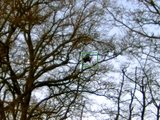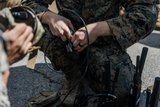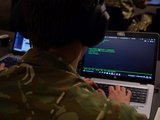Northrop Grumman receives USAF EA pod upgrade contract
Northrop Grumman has been awarded a $52.8 million award by the US Air Force (USAF) to upgrade its electronic attack (EA) pods. The 27-month engineering and manufacturing development (EMD) contract has a potential value of $480 million including EMD, a low-rate initial production phase (LRIP) and five production options.
Northrop Grumman will carry out work that will see USAF pilots provided with increased electronic warfare (EW) protection during combat operations.
Northrop Grumman's solution, an upgraded ALQ-131 EA pod, is fully capable of operating in support of A-10, C-130, F-15 and F-16 aircraft and aircrews. The upgrade includes a proven digital radio frequency memory, a common component for modern electronic warfare systems.
According to the company, this digital receiver/exciter technology makes a fourth-generation aircraft survivable in a fifth-generation world. Northrop Grumman is utilising mature technology across a number of programmes providing scalable and economical unique electronic warfare capability to gain fifth generation abilities in form/fit packages for USAF fixed and rotary wing aircraft.
Northrop Grumman has delivered more than 500 digital radio frequency memories which are installed on F-16s and other modern fighter aircraft. The company has more than 60 years of experience in electronic warfare protecting B-1, B-52, F-15, F-16, F-18, F-35 and SR-71 aircraft and aircrews.
More from Digital Battlespace
-
![EID to unveil new vehicle communication system at DSEI]()
EID to unveil new vehicle communication system at DSEI
The Portuguese company’s naval communications system is in service across more than a dozen countries. It has turned to its home nation for support in developing a new vehicle based C2 system.
-
![Chess Dynamics successfully demonstrates Vision4ce AI-driven tracker]()
Chess Dynamics successfully demonstrates Vision4ce AI-driven tracker
The Vision4ce Deep Embedded Feature Tracking (DEFT) technology software is designed to process video and images by blending traditional computer vision with artificial intelligence (AI) algorithms to present actionable information from complex environments.
-
![Wave Relay devices cleared for security use on commercial systems in industry trend]()
Wave Relay devices cleared for security use on commercial systems in industry trend
Persistent Systems has been cleared by National Security Agency (NSA) to transmit sensitive data on commercial networks. The devices are added to the NSA’s Commercial Solutions for Classified (CSfC) component list which also includes other companies’ products providing the same security.
-
![UK teases cyber spending boost in Strategic Defence Review ahead of “imminent” release]()
UK teases cyber spending boost in Strategic Defence Review ahead of “imminent” release
The release of the UK’s Strategic Defence Review (SDR) has been long promised as mid-year. It is possible it could be as early as 2 June although the UK Ministry of Defence (MoD) continues to play its cards close to its chest.
-
![Intelsat emphasises SATCOM resilience for SOF in contested domains (video)]()
Intelsat emphasises SATCOM resilience for SOF in contested domains (video)
Intelsat outlines how its multi-orbit SATCOM architecture is enhancing connectivity and resilience for special operations forces operating in degraded and contested environments.
-
![US Space Force’s next-generation missile warning system moves forward with $500 million in new contracts]()
US Space Force’s next-generation missile warning system moves forward with $500 million in new contracts
Next-Generation Overhead Persistent Infrared (Next-Gen OPIR) satellites are intended to provide early warning of missile launches from any location worldwide and new ground stations will result in expanded coverage of critical missile warning.























